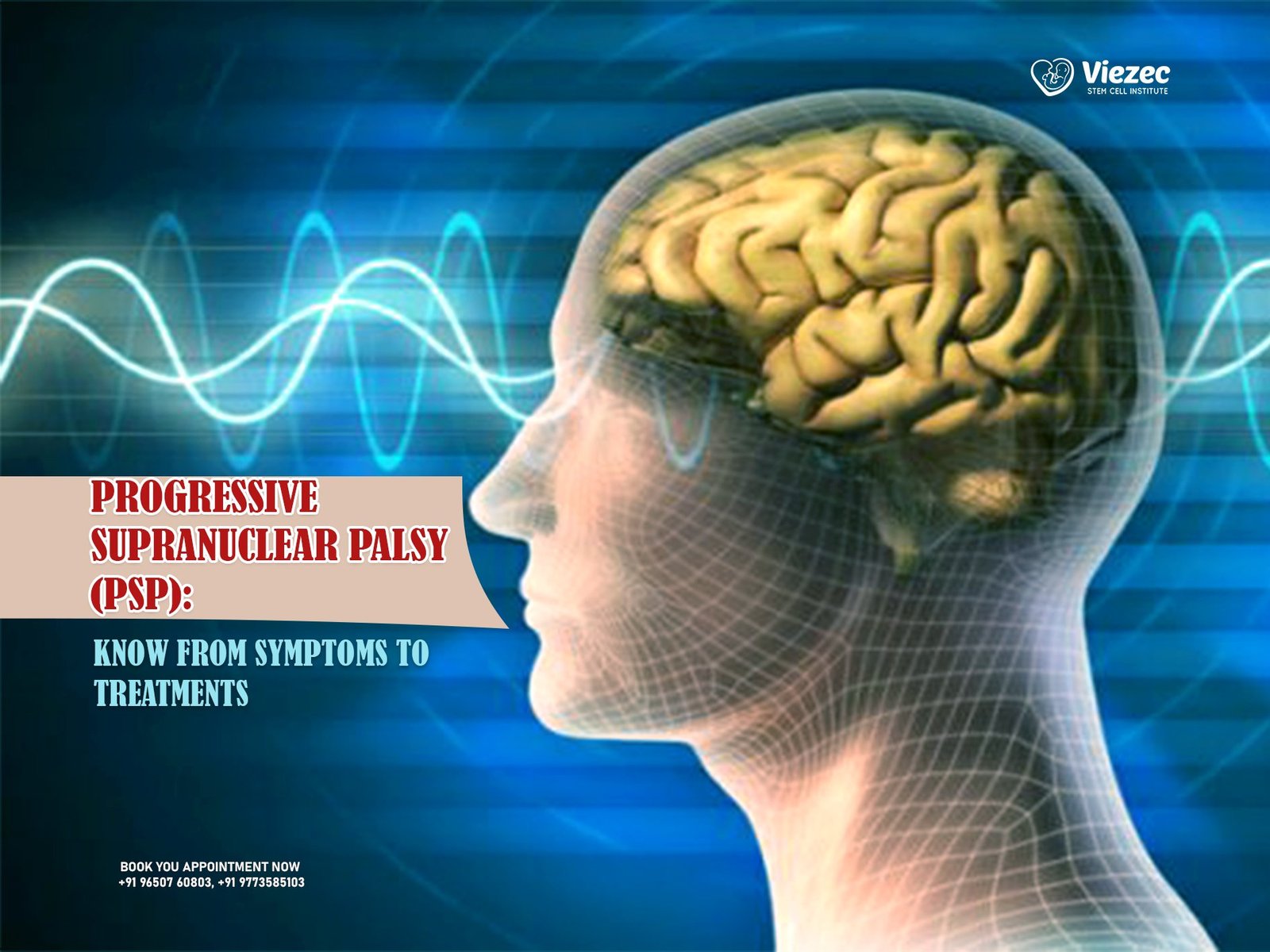The optic nerve plays a pivotal role in how we experience the world around us. It acts as the communication line between the eye and the brain, transmitting visual signals from the retina. Damage to this nerve can result in irreversible vision loss, posing a significant challenge in ophthalmology. However, recent advancements in optic nerve regeneration treatments offer hope for restoring vision in patients with optic nerve damage.
In this article, we’ll dive into the latest breakthroughs in treatments such as stem cell therapy, exosome therapy, and other cutting-edge techniques, all of which offer new possibilities for the future of vision restoration.
Understanding the Optic Nerve and Its Role in Vision
The optic nerve is far more than just a physical structure; it is the lifeline that brings images from the outside world into focus in our brains. Without it, the brain cannot process what we see, rendering the visual system inoperable. Understanding the optic nerve’s crucial role is the first step in comprehending the complexity of treating nerve damage.
What Makes the Optic Nerve Vital for Vision?
The optic nerve contains over a million nerve fibers that carry visual information from the retina, the light-sensitive layer at the back of the eye, to the brain. These fibers transmit electrical impulses that are converted into images by the brain. Without a properly functioning optic nerve, the brain cannot receive or interpret visual signals, making the optic nerve indispensable for sight.
How Damage to the Optic Nerve Affects Visual Function
When the optic nerve is damaged, the flow of information between the eye and brain is interrupted, leading to various degrees of vision loss. The most common conditions associated with optic nerve damage include glaucoma, optic neuritis, and trauma. Once these nerve fibers are damaged, they typically do not regenerate, making the resulting vision loss permanent. This inability to repair itself is what makes optic nerve damage particularly challenging to treat.
What is Optic Nerve Damage?
Optic nerve damage refers to any condition that impairs the nerve’s ability to transmit visual information from the eye to the brain. This damage can be caused by a variety of conditions, including diseases like glaucoma, inflammatory conditions such as optic neuritis, and physical trauma. The difficulty in treating optic nerve damage lies in the fact that, unlike other tissues in the body, nerve fibers in the optic nerve have a limited capacity to regenerate.
Causes of Optic Nerve Damage
-
Glaucoma: Often referred to as the “silent thief of sight,” glaucoma causes gradual damage to the optic nerve due to elevated intraocular pressure. Over time, this pressure damages the nerve fibers, leading to vision loss.
-
Optic Neuritis: This inflammation of the optic nerve is often linked to multiple sclerosis (MS) but can also occur due to infections or autoimmune disorders. The inflammation can disrupt the transmission of visual signals.
-
Trauma: Physical injuries to the head or eyes can cause direct damage to the optic nerve fibers. This includes incidents such as car accidents, sports injuries, or falls.
-
Ischemic Optic Neuropathy: Reduced blood flow to the optic nerve can lead to damage, resulting in vision loss. This condition is often associated with vascular diseases like diabetes or hypertension.
-
Inherited Conditions: Genetic disorders, such as Leber’s hereditary optic neuropathy, can lead to progressive degeneration of the optic nerve, causing vision impairment from an early age.
Risk Factors for Optic Nerve Injury
-
Age: As people age, they become more susceptible to optic nerve damage, particularly from conditions like glaucoma.
-
Genetics: A family history of optic nerve conditions can increase the risk of hereditary optic neuropathies.
-
High Blood Pressure: Chronic high blood pressure can limit blood flow to the optic nerve, leading to nerve damage.
-
Trauma: Any physical injury to the head or eye region poses a risk to the optic nerve, potentially leading to permanent damage.
Take the First Step Toward Restoring Your Vision!
Explore our revolutionary stem cell therapies for optic nerve regeneration. Get personalized advice today!
Exploring the Challenges of Optic Nerve Regeneration
Optic nerve regeneration remains one of the most formidable challenges in medical science. While significant advances have been made in regenerative medicine, restoring optic nerve function is a complex and multi-faceted issue. Researchers are making strides, but the path to fully functional regeneration is still long.
Why Regenerating the Optic Nerve is Difficult
The optic nerve is part of the central nervous system (CNS), which is known for its limited ability to regenerate. Unlike peripheral nerves, which can repair themselves to some extent, the optic nerve does not have the same regenerative capacity. The primary reason for this is the presence of inhibitory molecules in the CNS that prevent nerve cells from regenerating after injury. These factors make it incredibly difficult to restore lost function and re-establish communication between the retina and the brain.
Key Hurdles in Optic Nerve Repair
Inhibitory Environment: The optic nerve, like other CNS tissues, is surrounded by an environment that discourages regeneration. This includes the formation of scar tissue and the release of molecules that inhibit nerve cell growth.
Complexity of the Nervous System: The optic nerve is intricately connected to the brain through highly specialized neural pathways. Regenerating these fibers requires not just repairing the nerve but also re-establishing its precise connections in the brain. This is a challenging feat due to the complexity of neural connections and the brain’s wiring.
Limited Blood Flow: The optic nerve has a relatively poor blood supply compared to other parts of the body. This makes it difficult for nutrients and repair mechanisms to reach the damaged areas. Without proper blood flow, healing becomes much slower and less effective.
The Science Behind Optic Nerve Regeneration
Researchers have made exciting discoveries about the potential for regenerating optic nerve tissue. While natural regeneration remains limited, various therapies show promise for stimulating healing and nerve regrowth. These therapies include stem cell treatment, neuroprotective drugs, and gene therapies.
How the Optic Nerve Communicates with the Brain
The optic nerve is made up of retinal ganglion cells (RGCs), which are responsible for transmitting visual information from the retina to the brain. These RGCs send electrical impulses through the optic nerve to the visual cortex in the brain, where the information is processed and converted into images. When the optic nerve is damaged, this communication breaks down, leading to vision loss.
The Biology of Optic Nerve Regeneration
For the optic nerve to regenerate, the nerve fibers need to grow from the damaged area to the brain. This process involves encouraging the survival and growth of retinal ganglion cells and overcoming the natural barriers to regeneration present in the central nervous system. In addition, the damaged area must be treated in a way that allows the nerve fibers to regrow and reconnect with the brain.
Stem Cell Therapy for Optic Nerve Regeneration
Stem cell therapy holds great potential for regenerating damaged optic nerve fibers. By introducing stem cells into the damaged area, researchers hope to stimulate the growth of new nerve tissue and promote healing.
How Stem Cells Can Aid in Healing
Stem cells have the remarkable ability to differentiate into various types of cells, including nerve cells. When stem cells are introduced into the optic nerve, they can potentially replace damaged cells, promote the growth of new nerve fibers, and restore some degree of vision. This therapy may help to repair the optic nerve by regrowing the fibers that are vital for vision transmission.
Success Stories and Case Studies
Clinical trials have shown promising results with stem cell therapy for optic nerve damage. For instance, patients with optic neuropathy have reported partial vision recovery after receiving stem cell injections into their eyes. While research is still ongoing, these early results suggest that stem cells could play a critical role in restoring optic nerve function.
Your Path to Recovery Starts Here
Start your journey towards optic nerve regeneration with cutting-edge stem cell therapy.
Exosome Therapy: A Revolutionary Treatment for Optic Nerve Healing
Exosome therapy is an emerging treatment that uses tiny vesicles—known as exosomes—to promote tissue repair. These exosomes contain proteins, lipids, and RNA, which can facilitate communication between cells and enhance regeneration.
What Are Exosomes and How Do They Help?
Exosomes are nano-sized particles secreted by cells. They contain bioactive molecules that can modulate cellular activities, including promoting tissue repair and reducing inflammation. In the context of optic nerve regeneration, exosomes may help repair damaged retinal ganglion cells, encourage nerve growth, and accelerate recovery.
Benefits of Exosome Therapy for Nerve Repair
-
Reduced Inflammation: Exosomes help reduce inflammation at the site of damage, promoting a healthier environment for nerve regeneration.
-
Promotes Nerve Growth: Exosomes can stimulate the growth of optic nerve fibers, aiding in the restoration of lost function.
-
Non-invasive: Compared to other treatment options, exosome therapy is minimally invasive, reducing the risk of complications and side effects.
Platelet-Rich Plasma (PRP): A New Hope for Optic Nerve Regeneration
Platelet-rich plasma (PRP) therapy is another promising treatment for optic nerve damage. This therapy uses a patient’s own blood to extract platelets, which are rich in growth factors that can aid in tissue healing and regeneration.
How PRP Works in Nerve Repair
PRP works by injecting concentrated platelets into the optic nerve, providing high concentrations of growth factors directly to the damaged tissue. These growth factors help stimulate the healing process, promote nerve regeneration, and potentially improve vision.
Clinical Applications and Outcomes of PRP Treatment
While still in its early stages, PRP therapy for optic nerve regeneration has shown positive results in some patients. Clinical studies have demonstrated that PRP may help restore vision and repair nerve fibers, particularly in cases of optic neuropathy. Researchers continue to explore its effectiveness in larger trials.
Neuroprotective Drugs and Their Role in Optic Nerve Regeneration
Neuroprotective drugs are designed to shield nerve cells from further damage, helping to preserve the optic nerve’s function and promote healing. These drugs work by reducing inflammation, oxidative stress, and cell death—key factors that can impair nerve regeneration.
How Neuroprotective Drugs Help Prevent Further Damage
When the optic nerve is damaged, it’s not just about healing the existing injury—it’s also about preventing further deterioration. Neuroprotective drugs can help by protecting retinal ganglion cells from additional harm. They achieve this by reducing harmful inflammation, limiting oxidative damage, and supporting cellular repair mechanisms. These drugs help create an environment that supports regeneration and ensures that the optic nerve has the best chance for recovery.
Types of Neuroprotective Drugs in Use Today
-
Brimonidine: Commonly used to treat glaucoma, brimonidine can protect retinal ganglion cells from damage due to elevated intraocular pressure. It works by reducing fluid buildup in the eye, thus relieving pressure and protecting the optic nerve.
-
N-Acetylcysteine (NAC): As an antioxidant, NAC helps to neutralize free radicals that cause oxidative stress in nerve cells. It has been shown to support the survival of retinal ganglion cells in patients with optic nerve damage.
-
Memantine: This drug has shown promise in protecting nerve cells, particularly in conditions like Alzheimer’s disease and glaucoma. By regulating the activity of certain brain chemicals, memantine helps to shield nerve cells from damage.
Exploring Advanced Technologies in Optic Nerve Treatment
Technological advancements are playing a critical role in improving the effectiveness of optic nerve regeneration therapies. From nanotechnology to laser treatments, new technologies offer hope for accelerating nerve repair and enhancing the body’s natural healing processes.
The Role of Nanotechnology in Nerve Regeneration
Nanotechnology involves the use of extremely small particles and devices to interact with biological systems at the cellular level. In optic nerve treatment, nanotechnology could be used to deliver growth factors directly to the nerve fibers, enhancing their ability to regenerate. By using nanoscale materials, researchers hope to overcome some of the natural barriers to nerve regrowth, improving the success of regenerative therapies.
Nanoparticles could also be used to transport drugs or gene therapies to specific parts of the optic nerve, targeting the damaged areas more effectively than traditional treatments. This precision could lead to better outcomes in terms of both nerve regeneration and vision restoration.
Laser Treatments for Optic Nerve Repair
Laser therapy is another exciting frontier in optic nerve regeneration. Certain types of laser treatments are designed to stimulate the growth of retinal ganglion cells and promote healing in the optic nerve. Studies in animal models have shown that laser therapy can help increase the regeneration of nerve fibers. Although research is still ongoing, early results from human clinical trials are promising.
By using lasers to target specific areas of the optic nerve, researchers are exploring ways to encourage nerve growth and repair in a more controlled and efficient manner. This non-invasive treatment may eventually become a valuable tool in the quest to regenerate optic nerve tissue.
Clinical Trials and Research in Optic Nerve Regeneration
The future of optic nerve regeneration is closely tied to ongoing research and clinical trials. As scientists continue to explore the potential of regenerative therapies, clinical trials serve as a critical avenue for testing the safety and effectiveness of new treatments.
Ongoing Studies and Breakthroughs
Researchers worldwide are focusing on innovative therapies for optic nerve regeneration, including stem cell therapy, exosome therapy, and gene therapy. Clinical trials are currently underway to test the feasibility of these treatments in humans, and early findings are already shedding light on their potential. Studies are also being conducted to better understand the mechanisms behind optic nerve damage and to identify the most effective methods for stimulating nerve regeneration.
One promising avenue of research involves combining multiple therapies, such as using stem cells alongside neuroprotective drugs or gene therapy. These combined approaches could potentially maximize the benefits of each individual treatment and accelerate the healing process.
Promising Results and Future Directions
While it’s still early in the development of optic nerve regeneration treatments, the results from ongoing clinical trials are encouraging. Some studies have reported partial restoration of vision in patients who received stem cell or exosome therapy, showing that recovery is possible even for those with significant nerve damage. The future of optic nerve regeneration looks brighter as new breakthroughs in research continue to pave the way for more effective and accessible treatments.
Restore Your Vision Today with Advanced Stem Cell Therapy
Take advantage of our breakthrough treatments for optic nerve regeneration. Reach out to our experts now!
Patient Experiences: Real-Life Impact of Optic Nerve Regeneration
As optic nerve regeneration treatments evolve, patient stories provide valuable insights into their real-world impact. Many patients who have undergone these treatments are reporting significant improvements in their vision and overall quality of life.
Success Stories from Patients Who Have Undergone Treatment
Although these treatments are still in the experimental stages, there have been some inspiring success stories. Patients with conditions like optic neuropathy and glaucoma have reported improvements in vision after receiving regenerative treatments. For example, some patients who were previously unable to see clearly due to optic nerve damage have regained partial vision following stem cell injections or exosome therapy. These stories serve as a beacon of hope for others facing similar challenges.
Challenges Faced During Recovery
While these treatments offer hope, recovery is not always straightforward. Some patients experience slow progress or temporary side effects such as discomfort or inflammation. Additionally, the extent of vision recovery can vary depending on the severity of the nerve damage and the type of treatment used. However, for many patients, the potential for improvement provides the motivation to persevere through the recovery process.
What to Expect During Optic Nerve Regeneration Treatment
Optic nerve regeneration treatments vary in terms of the approach, duration, and complexity. Each treatment option comes with its own set of expectations regarding the timeline, recovery process, and potential side effects. It’s essential to understand what patients can expect before, during, and after the treatment to make an informed decision.
Treatment Timeline and Recovery Process
The timeline for optic nerve regeneration treatments depends on the type of therapy being used. Some treatments, like platelet-rich plasma (PRP) or exosome therapy, might require multiple sessions over the course of weeks or months. Stem cell therapy, on the other hand, might take longer to show results, as the body needs time to accept and incorporate the stem cells for nerve regrowth.
For most patients, the treatment itself is minimally invasive. Stem cell injections, for example, can often be done as an outpatient procedure, meaning patients can return home the same day. However, some therapies may require hospitalization or follow-up visits to monitor progress.
Recovery from optic nerve regeneration treatments varies from patient to patient. While some may notice improvement relatively quickly, others may experience a gradual recovery. In any case, patients are typically advised to avoid strenuous activities and take time to rest during the early stages of recovery to allow the optic nerve the best chance to heal.
Possible Side Effects and Complications
As with any medical treatment, optic nerve regeneration therapies come with potential side effects and risks. Common side effects include mild discomfort, inflammation, or redness at the injection site. Some patients may experience temporary vision blurriness or sensitivity as their eyes adjust to the treatment.
More serious complications are rare but could include infections or adverse reactions to the therapies, especially in experimental treatments. It’s essential for patients to be fully informed and to follow their healthcare provider’s post-treatment instructions carefully to minimize the risk of complications.
Diet and Lifestyle Factors to Support Optic Nerve Health
A healthy diet and lifestyle play a critical role in supporting optic nerve regeneration and overall eye health. Patients undergoing optic nerve treatments can benefit from nutritional support and making healthy lifestyle choices to enhance the healing process and improve long-term outcomes.
Nutrients That Promote Nerve Healing
Certain nutrients are essential for nerve health and regeneration. These include:
Omega-3 Fatty Acids: Found in fish oils and flaxseeds, omega-3 fatty acids help reduce inflammation and support the repair of nerve cells.
Antioxidants: Vitamins A, C, and E, as well as other antioxidants, help protect nerve cells from oxidative stress and damage. These nutrients support cellular repair and reduce inflammation.
B Vitamins: B vitamins, particularly B12 and folate, are crucial for nerve health. They help support the growth and regeneration of nerve cells, and deficiencies can worsen nerve damage.
Magnesium: Magnesium plays a key role in nerve function and is vital for promoting nerve regeneration. It helps reduce nerve inflammation and supports healing.
Patients should discuss their dietary needs with a healthcare provider to ensure they are getting the nutrients necessary to support optic nerve healing.
Lifestyle Changes to Protect Your Optic Nerve
In addition to a healthy diet, certain lifestyle changes can also benefit optic nerve health:
Quit Smoking: Smoking restricts blood flow and contributes to inflammation, both of which can worsen nerve damage. Quitting smoking is crucial for protecting the optic nerve.
Exercise Regularly: Regular physical activity improves circulation, boosts the immune system, and helps maintain a healthy blood pressure, all of which can benefit nerve health.
Manage Stress: Chronic stress can lead to elevated levels of cortisol, which can negatively impact nerve cells. Practicing stress-reduction techniques, such as mindfulness or yoga, can support overall nerve health.
Control Blood Pressure: High blood pressure can damage the optic nerve over time. Managing blood pressure through diet, exercise, and medications, if necessary, is key to maintaining eye health.
The Future of Optic Nerve Regeneration
The field of optic nerve regeneration is evolving rapidly, with groundbreaking research and emerging technologies offering new hope for patients suffering from optic nerve damage. Researchers are continuing to explore innovative ways to stimulate nerve growth, protect against further damage, and restore vision.
Cutting-Edge Research and What’s on the Horizon
Gene therapy, stem cell advancements, and nanotechnology are just a few areas that hold promise for the future of optic nerve regeneration. Gene therapy, for example, could potentially be used to deliver specific genetic material that promotes nerve regeneration, while nanotechnology could enable targeted drug delivery directly to the optic nerve. These technologies offer exciting possibilities for more effective treatments in the near future.
Potential Breakthroughs in the Coming Years
Looking ahead, the future of optic nerve regeneration holds great promise. As research continues to uncover new methods for stimulating nerve growth and overcoming the limitations of the optic nerve, we may soon see therapies that are more effective and accessible. Personalized medicine, which tailors treatments to individual patients, could also play a significant role in optimizing outcomes for those with optic nerve damage.
We may also see new combinations of treatments that use multiple approaches—such as stem cells, exosomes, and neuroprotective drugs—working together to achieve better results. As the field of regenerative medicine continues to advance, the possibilities for restoring vision are expanding, offering hope for those affected by optic nerve damage.
Cost Considerations for Optic Nerve Regeneration Treatment
As with any medical treatment, the cost of optic nerve regeneration therapies can vary depending on the type of treatment and the clinic or hospital providing the care. Additionally, insurance coverage for these treatments may be limited, particularly for newer, experimental therapies.
Financial Planning for Treatment Costs
Patients should be prepared for potential out-of-pocket expenses when considering optic nerve regeneration treatments. Since many of these therapies are still in the experimental phase, they may not be covered by insurance. Patients should also take into account the cost of follow-up visits, additional sessions, and potential recovery costs. Financial planning and discussions with healthcare providers can help ease the burden of treatment costs.
Frequently Asked Questions
-
Is optic nerve regeneration possible?
Yes, several promising treatments, such as stem cell therapy and exosome therapy, have shown potential for regenerating optic nerve tissue. However, more research is needed to confirm their long-term effectiveness. -
What is the success rate of optic nerve regeneration?
Success rates vary depending on the treatment used and the severity of the optic nerve damage. Early studies show promising results, especially in patients with less severe damage. -
Are these treatments available worldwide?
Optic nerve regeneration treatments are currently available in select clinical centers around the world. As research progresses, access to these therapies is expected to expand.









